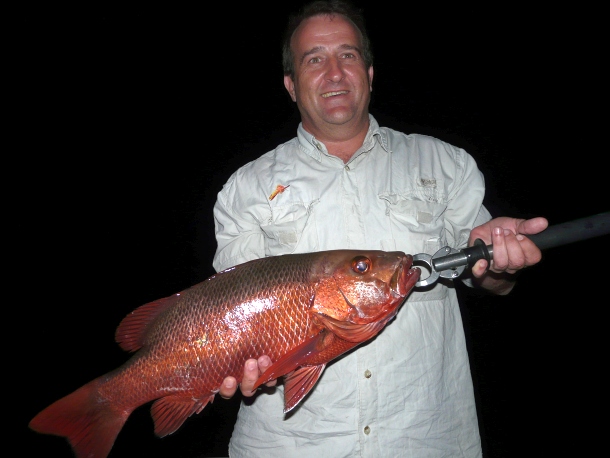MANGROVE jacks (Lutjanus argentimaculatus) are one of the most popular members of the family Lutjanidae targeted by anglers in our northern waters.
The lutjanids are a large group of mainly reef dwelling fishes known throughout the world as “tropical snappers”. They are active predators which use ambush tactics to prey mostly on smaller fishes and crustaceans.
To assist with their predatory activities, they possess distinctive canine teeth at the front of the mouth which are adapted for seizing and holding their prey. The large and very sharp canine teeth are a distinctive trademark of lutjanids and deserve respect as they can cause nasty injuries to the unwary.
Mangrove jacks occur over a large part of the tropical Indo-Pacific and have been recorded from places as far east as Samoa, throughout Asia, off the coasts of India and East Africa, and even as far west as the Mediterranean Sea (probably travelling via the Suez canal). In Australia, jacks can be caught throughout our northern coastline from around Broome in the west to as far south as the rivers in the central coast of NSW. South of about Fraser Island they tend to be seasonal captures and can really be reliably targeted only in the summer months when water temperatures approach or exceed around 22°C.
The life history of mangrove jacks is typical of many of our northern sportfish. Juveniles spend the first few years of their lives in rivers and estuaries, ranging far up brackish mangrove creeks and even into freshwater areas, where they frequent snags and rocky structures. Once they reach maturity at between 40 and 50cm in length, most mangrove jacks move out of the estuaries to offshore reefs where mature fish are known to spawn.
Until recently, jacks larger than 50cm were thought to be relatively rare in rivers and estuaries. However, in recent times in places like SE QLD it has become evident that there may be more large jacks in our rivers than previously thought. This realisation has come with improvements in lure and tackle technology which have allowed anglers to effectively target the larger fish (usually for catch and release) – in years gone by it was hard to say how many 50+ cm jacks remained in estuaries because fish that size were extremely difficult to pull from their snags!
Like other lutjanids, jacks do not change sex during their lives and, depending on water temperature and food availability, may take between four to eight years to mature at between 40 and 50cm long. This means that care must be taken to ensure that enough jacks survive to make it through to the offshore reefs. Catch and release of river caught fish is therefore considered by many switched on jack specialists as an important management option. Maximum size for mangrove jacks on offshore reefs exceeds a metre long and 16kg, and it appears that jacks around 70 to 80cm long can be anything from 15 to 30 years old.

These big 80cm+ jacks were taken from offshore reefs north of Papua New Guinea. Image: Ben Diggles

















